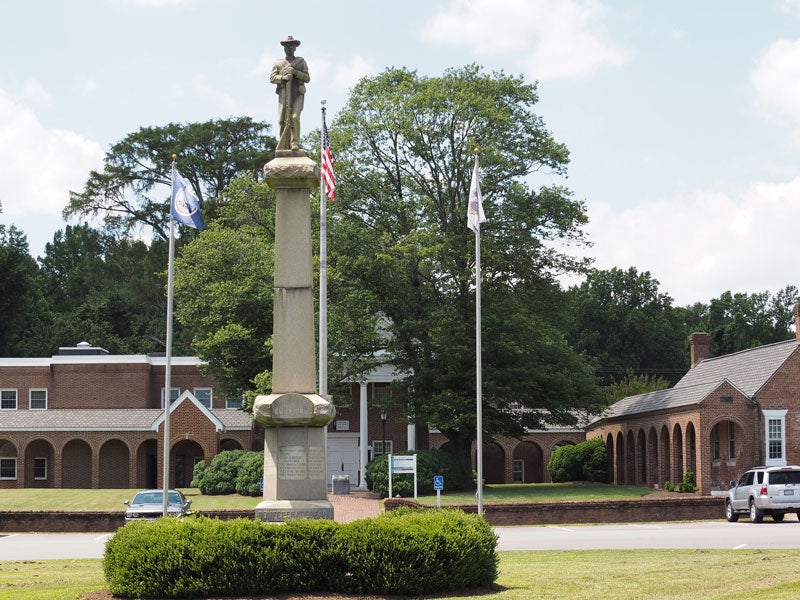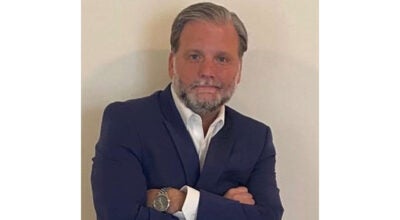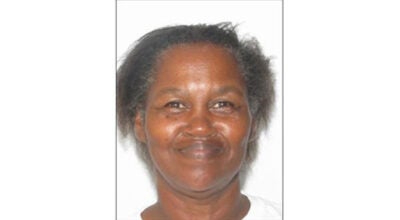No consensus on contextualizing monument
Published 9:00 am Wednesday, November 18, 2020

- File photo
|
Getting your Trinity Audio player ready...
|
ISLE OF WIGHT
Isle of Wight’s monument task force came no closer to consensus Nov. 12 on a preferred method for contextualizing the county’s Confederate statue than it had at its previous meeting on Oct. 21.
But according to task force member Volpe Boykin, they don’t need to in order to fulfill the twofold mandate the county’s Board of Supervisors gave the group last month: Evaluate potential sites for the monument’s relocation and ways of contextualizing it should it remain at its current location outside the county’s government complex.
“We just give them a list; it’s up to them anyway,” Boykin said. “We’ve done exactly what they voted for us to do … . If they had voted ‘and give a recommendation’ then I’d say give them a recommendation, but they didn’t do that.”
As it stands, the group has agreed on a ranked list of seven potential relocation sites, with the town of Windsor’s municipal cemetery being No. 1 on that list. As for contextualization, the options range from erecting one or more additional monuments to adding signage about slavery and racism to altering the Confederate monument, in no particular order of preference.
The group plans to present its recommendations, or lack thereof, to the Board of Supervisors on Nov. 19, a few weeks ahead of the Dec. 1 deadline the board gave the group. But not all were content to agree they could not agree on contextualization.
“The task force was made for a reason … . If we were just going to turn a paper in, we can go home and talk on the phone or send emails and then send that over to the Board of Supervisors,” said Derek Boone, who represents the county’s Newport District on the task force.
Boykin, who represents the Carrsville District, has, on more than one occasion, called the nationwide push to remove Confederate monuments part of a “Marxist agenda.” But he says his time on the task force has changed his personal views since he had advocated against relocation during the county’s Sept. 3 public hearing on the matter. He now believes the best solution for ensuring the monument’s preservation is to get it “off government property and out of government control” — a view shared by the Rev. Dr. Lilton Marks, for different reasons.
“It’s about what’s right … . That monument represents the Confederacy, and a large segment of this United States suffered because of the Confederacy,” said Marks, who’s representing the Isle of Wight NAACP on the task force. “That is the reason we’re asking it to be moved off of government property … . We want to tell the whole history, but don’t put it in a place of honor.”
But that’s also why Boykin doesn’t want the group to take an official position on whether the statue stays or goes.
“I don’t want to come out and support something a whole lot of people I represent don’t,” Boykin said.
“Just like my personal view is to move it to the cemetery, but the people that are behind me that I represent don’t want that,” said Maggie Richards, who represents the county’s Windsor District on the task force. “So I have a dilemma. A big one. They’re not going to be pleased with me.”
Over the past two weeks, Boykin and Richards have been talking with members of the Windsor community, to include Town Council members, to gauge how receptive they’d be to having the Confederate monument relocated to the town’s cemetery. On Nov. 10, Boykin signed up for citizens’ time at the council’s monthly meeting and presented council members with information on some of the logistics involved in relocating the monument to the town.
“I said, ‘What are your concerns about the task force recommendation?’ … so basically I went down their list to make sure those problems were all solved, so the cemetery could stay an option,” Boykin said.
Boone said he felt “blindsided” when he — unaware of Boykin’s and Richards’ actions — received a call from Windsor Mayor Glyn Willis, during which Willis allegedly expressed “a lot of concerns,” including a lack of space in the cemetery for the monument and its height relative to what else is already in place there.
Willis, speaking to The Smithfield Times on Nov. 13, however, said the Town Council has yet to take an official position on whether it wants the monument.
“At this point the council is letting the task force do its job before we get involved with it,” Willis said.
There is a section of the cemetery where the town doesn’t allow above-ground headstones, Boykin confirmed, but the Town Council, he said, has the power to override that rule with a vote to “allow this item in this 13-by-13-foot square.”
“I totally agree with them that at its current height it’s too tall for that cemetery,” he said, but added that it could be “significantly shortened without affecting anything.”
Boykin had argued with County Administrator Randy Keaton at the task force’s October meeting over whether altering the monument in any way was permissible under the state law that allows localities to remove, relocate, cover or contextualize their Confederate monuments.
“I helped write this,” Boykin had said Oct. 21. “I was up in Richmond arguing in front of committees, working with lobbyists that we pay thousands of dollars to in Richmond when this bill was passed … . It started out with the word ‘alter.’ That word was taken out after much fighting.”
Boykin is now predicting that the law will once again change to permit alteration and “make all of that moot.”
“I know the bill is going to be filed,” he said. “I know it’s going to pass.”





